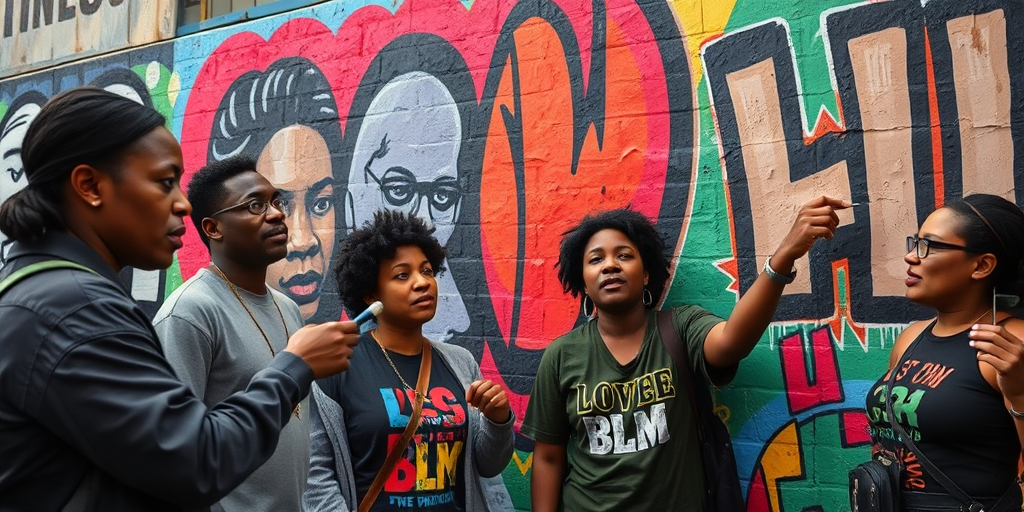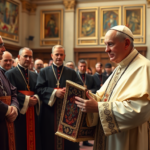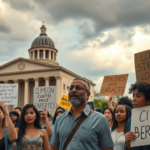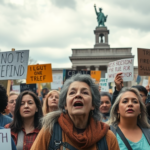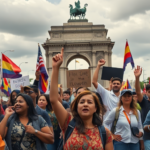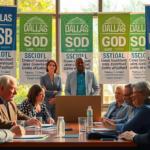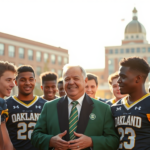Black Lives Matter Street Murals: An Enduring Legacy of Protest
In the summer of 2020, a wave of Black Lives Matter (BLM) street murals emerged as powerful symbols of protest across cities in the United States. These vibrant displays, often stretching across city streets, were a poignant response to the police killings of George Floyd, Breonna Taylor, and Ahmaud Arbery. Five years later, these murals continue to capture the spirit of a pivotal moment in history, standing as a testament to ongoing struggles against racial injustice and police brutality.
Painting a Path to Justice
Initially commissioned by towns and cities nationwide, these murals represented a moment of solidarity in a nation deeply shaken by racial violence. They mirrored the widespread, multiracial protests that marked mid-2020, turning roadways into canvases of demand for justice and equality.
One of the most iconic examples was located near the White House. Ordered by Washington D.C. Mayor Muriel Bowser, the mural spelled “Black Lives Matter” in massive yellow letters, serving as a defiant statement against the political climate under then-President Donald Trump. Though this mural has since been removed, its influence ignited a global flood of similar artworks within just 24 hours, illustrating the power of communal and artistic expression.
Murals as Community Pillars
Today, according to the Urban Art Mapping database, approximately 150 Black Lives Matter murals remain intact, each bearing a unique narrative of community resilience and purpose. These artworks persist despite challenges such as vandalism, wear and tear, and urban construction projects.
In Alabama’s historic Hobson City, the distinction as the first all-Black municipality was boldly reaffirmed with a mural reading “Black Towns Matter.” Painted on Martin Luther King Boulevard, this artwork underscores the enduring significance of Black autonomy and historical pride.
Cities such as Montgomery and Oakland have embraced these murals not only as temporary or permanent installations but as critical platforms for local dialogue on racial justice. In Oakland, the phrase “Black Lives Matter” spans several blocks, a testimony to the city’s dedication to social change. Reflecting Oakland’s intersectional activism, a subsequent mural honors Black Trans and Queer Lives, linking racial justice to broader human rights movements.
Challenges and Community Engagement
Despite their cultural significance, these murals face threats from vandalism and environmental degradation. Yet, each act of defacement underscores the importance of the messages they convey, spurring community-driven efforts to restore and preserve these artworks.
In Hartford, for example, a BLM mural near the Capitol was defaced with a swastika, prompting local artists to repaint it. Andre Rochester, one of these artists, emphasizes that such murals represent Hartford’s commitment to its Black and brown communities. “It makes a loud statement that the City of Hartford cares,” he asserts.
Similarly, in Seattle, local artist collectives regularly repaint murals to safeguard them against the elements and potential vandalism. The city’s enduring commitment to this art form underscores its role as a beacon of resistance and hope within the community.
Impactful Art’s Broader Resonance
The persistence of these murals goes beyond their physical presence — they serve as reminders of an unresolved struggle for justice and equality. While some, like the original D.C. mural, face removal, their absence is as telling as their presence, reflecting ongoing social tensions and aspirations.
In Los Angeles, the intersectionality of these protests is embodied by a rainbow-colored mural on Hollywood Boulevard stating “All Black Lives Matter,” amplifying both Black and LGBTQ+ rights. Such pieces engage broader audiences, inviting reflection on overlapping struggles within different communities.
The Future of BLM Murals
As these murals age, they continue to invite discussions about the future of race relations and social justice activism in the U.S. Residents and advocates alike ponder the lessons these artworks impart, recognizing them as instruments of both historical documentation and prompts for future action.
For cities that wish to foster ongoing dialogue, the objective is clear: maintain these symbols of resistance, preserve their narratives, and ensure their messages remain heard. Initiatives to engage local artists and fund mural maintenance will be vital in keeping the spirit of 2020 alive and relevant.
Conclusion and Call to Action
While the original murals might fade or be dismantled, their legacy endures, prompting a continual reflection on America’s path toward equality. Communities that have been shaped by these movements find in them an unwavering call to activism, community involvement, and collective memory.
For readers interested in supporting local mural preservation or engaging with community art initiatives, avenues for involvement include volunteering for nonprofit organizations involved in arts and culture or participating in community forum discussions about public space art. As the legacy of Black Lives Matter murals continues, they underscore crucial ongoing conversations about race, justice, and collective healing in America.
Neighboring regions and local residents are encouraged to engage with these efforts, as such artistic endeavors are both an homage to past struggles and a fulcrum for future societal growth.

